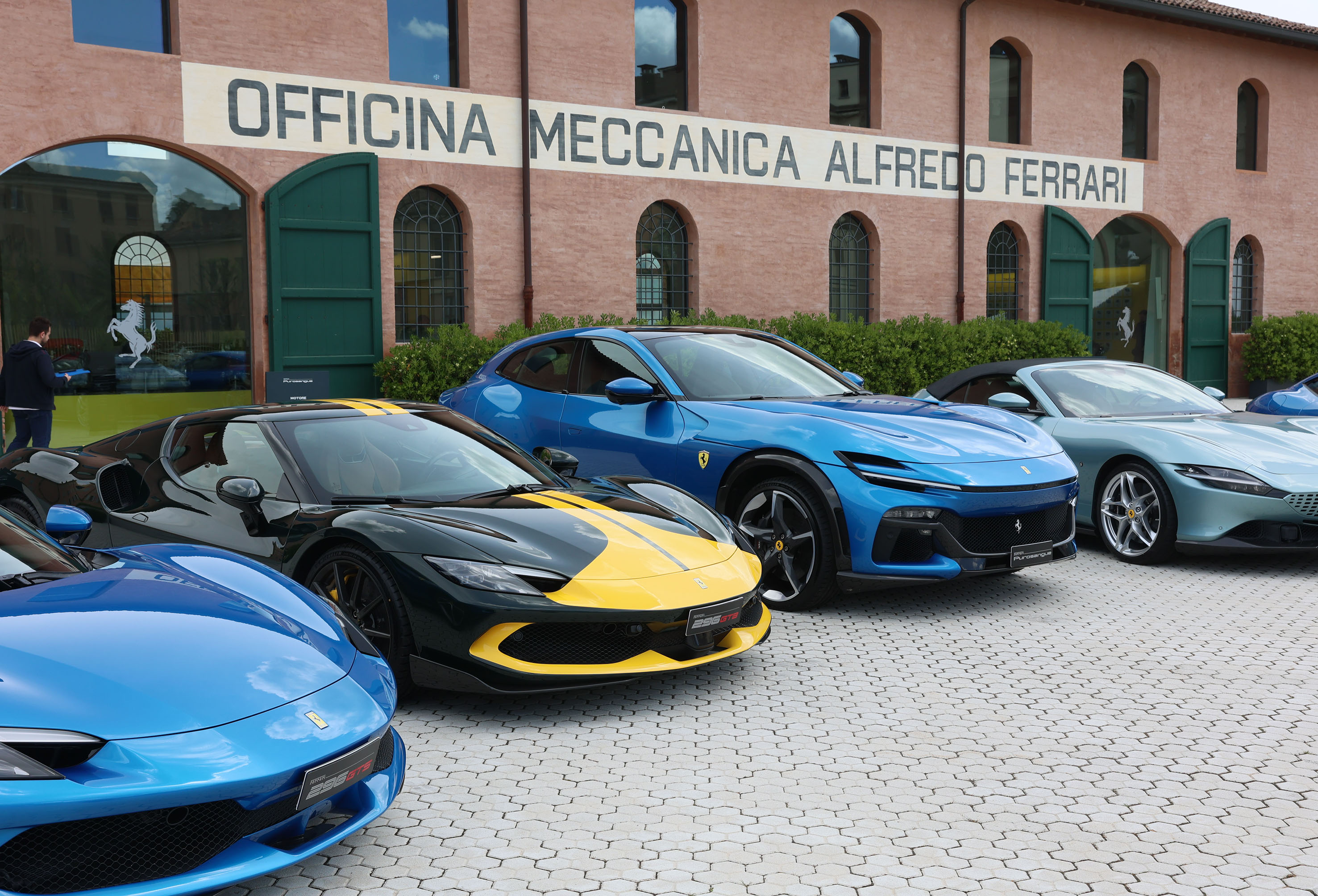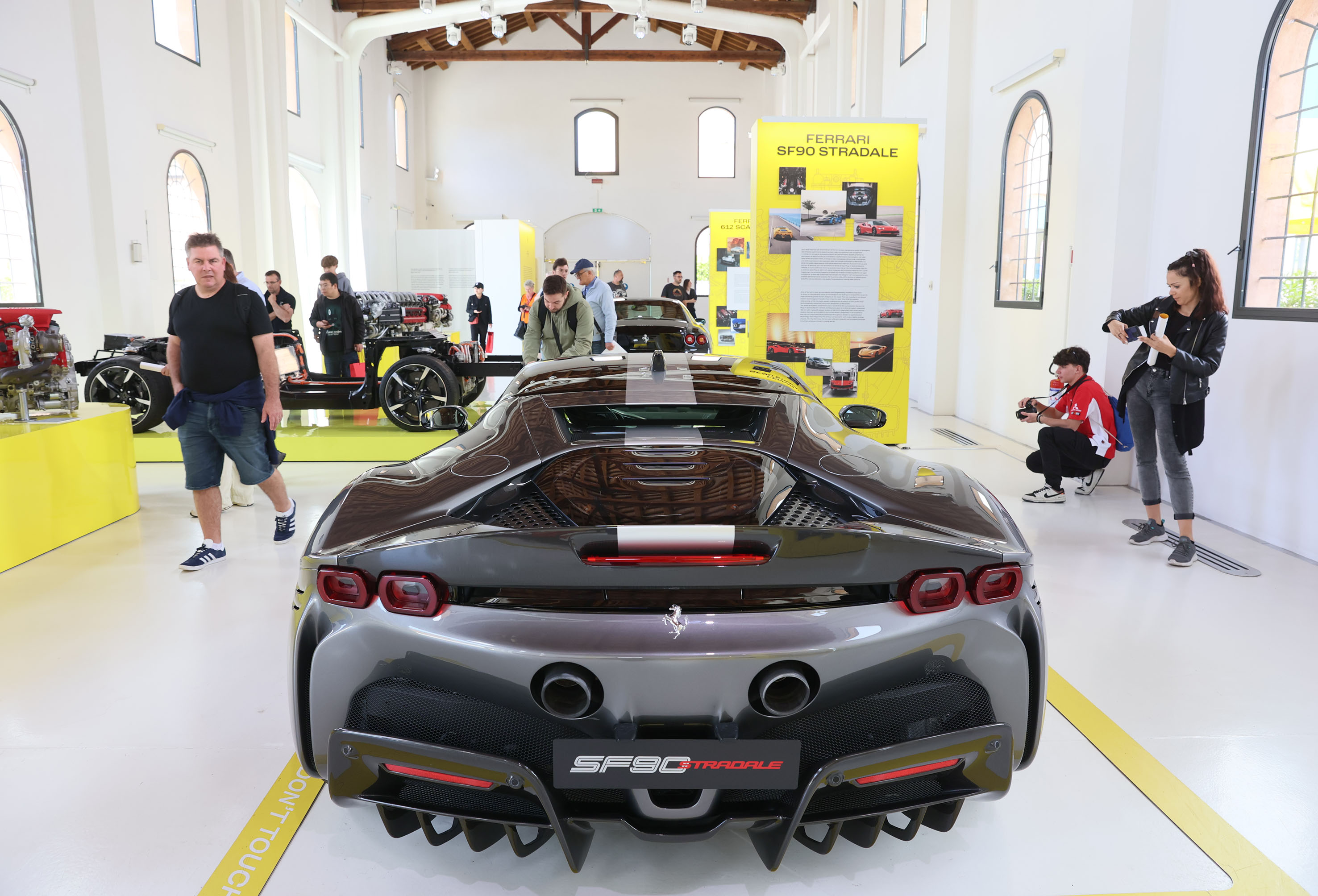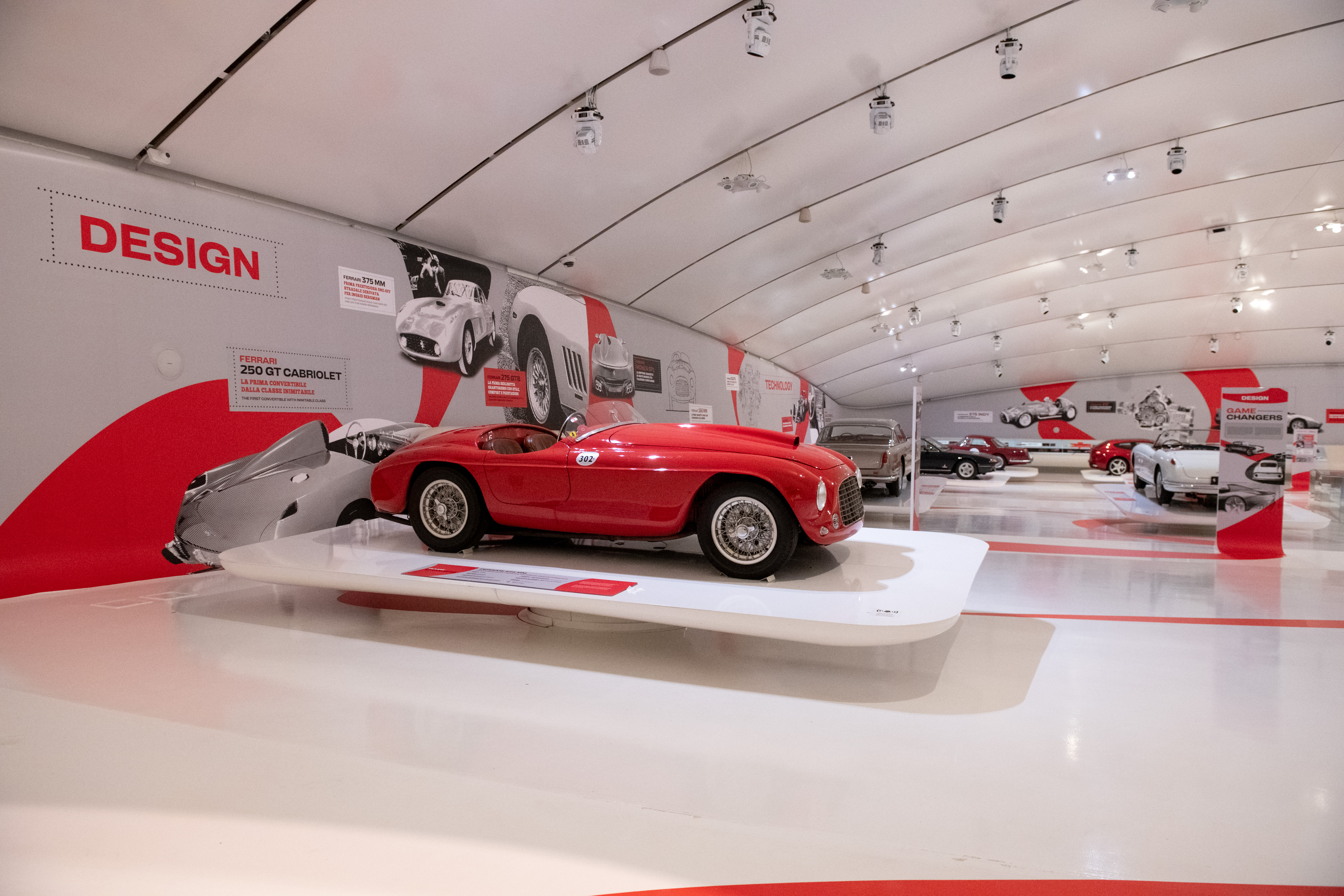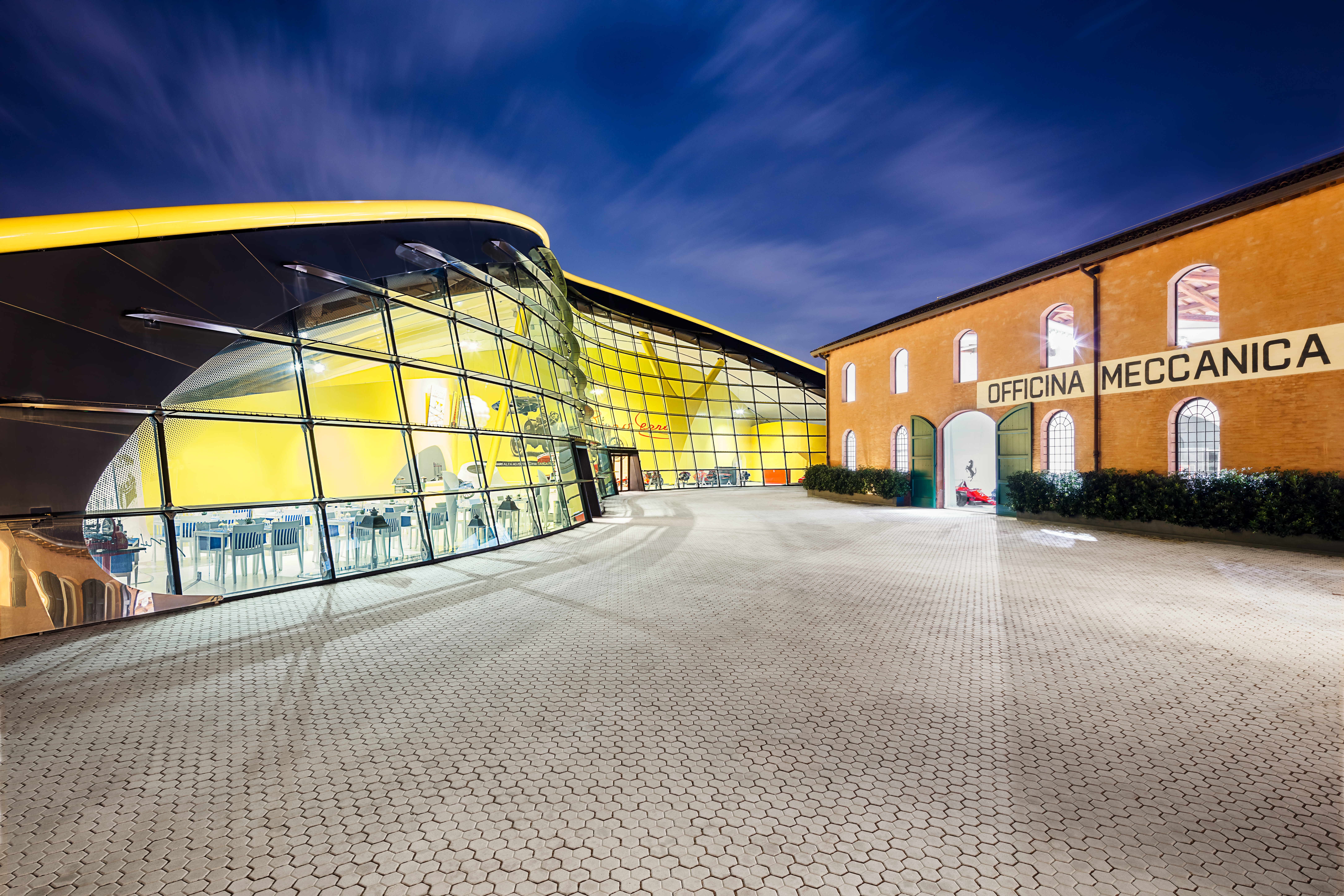Inside Motor Valley, Home Of Italy’s Most Iconic Automakers
This hallowed strip of Northern Italy houses the headquarters of Ferrari, Lamborghini, Maserati, Pagani and Ducati.

The roar of a fine-tuned engine is the soundtrack of the rolling green landscape south of the Apennine Mountains in Northern Italy. The Emilia-Romagna region is called Motor Valley for a reason. This modest stretch of roughly 8,700 square miles is headquarters to the greatest carmakers in the world—Lamborghini, Maserati, Pagani, De Tomaso, Dallara, Ducati motorcycles, Stanguellini (now defunct), but most of all Ferrari, born from the ashes of World War II.
Home to farmers who have worked the fields since the time of their Etruscan ancestors, Emilia-Romagna is a land of tinkerers and inventors—people like Guglielmo Marconi, who invented the radio in the late 19th century. An inspiration to the region, he spurred a generation of scientists and dilettantes into retrofitting old tools with up-to-date technology, like putting a motor on a bike and finding room for improvement on a new invention called the automobile.
Road racing in Italy dates to 1899 when the first racing car appeared in Brescia, just to the north of Motor Valley. Ettore Bugatti won a race in the city that year, driving his Prinetti & Stucchi three-wheeler, which helped spark interest in motor racing in the area. The Targa Florio, an endurance race in Sicily, was popular in the early years, as was the Mugello Circuit. But the race that mattered most was the Mille Miglia, first held in 1927, a 1,005-mile race that took more than 21 hours to finish. To test these new ultra-fast cars, manufacturers thought they would have to build a track. But the ancients anticipated their needs by providing Via Aemilia, a road established in 187 BC that runs 176 miles straight through the region.

The local nickname for the Ferrari Factory is the “Cittadella” (small city), whereupon entering you’ll find Cavallino restaurant, where Enzo Ferrari used to go with friends. Across from it sits a wind tunnel built by Pritzker Prize–winning architect Renzo Piano, and farther on is fellow Pritzker winner Jean Nouvel’s assembly facility, showrooms, offices and retail space, all under one roof.
Engines are fabricated on a slow assembly line in the Cittadella, giving Ferrari workers plenty of time to complete all the operations with absolute precision (it takes 16 days to make just one crankshaft). A discrepancy of even a few microns can result in failure. The company is currently producing V8, V12 and smaller V6 engines, whose plug-in hybrid layout increases performance while reducing emissions. Ferrari has announced that it is developing a full-electric powertrain, which is set to be unveiled in late 2025. While collectors seemingly prefer the roar of the combustion engine, the company has already said that its electric cars will maintain the Ferrari DNA, including a simulated version of a screaming performance-engine’s soundtrack.
Road-legal models and F1 single-seaters are assembled in separate factories. Some of the latter, reaching speeds of up to 220 mph, are sold for several million dollars once they reach the end of their racing careers. F1 cars are not street legal and can only be driven on private tracks, like the Fiorano test track near Maranello, which is why most owners prefer to leave them on the premises (there’s a whole building full of them). Doing so allows for regular service and maintenance by Ferrari’s team of professionals. The company offers clients a package enabling them to drive their cars at exclusive dedicated tracks where the factory takes care of transport and logistics. One of the most delicate pieces of an F1 car is the steering wheel, which some clients prefer to keep stored in Maranello for safety.

If it’s a Ferrari sports car you’re after (ranging from around $200,000 to the $2,000,000 for the most exclusive models, like the Ferrari Daytona SP3), you’ll have to be patient. Depending on the market, the waiting list for any Ferrari model is around two years, which is why many new to the brand opt for a pre-owned model. The company does have rules when it comes to customization options, even though the range of personalization is theoretically infinite. Rumor has it that you can’t use certain color schemes that are not in line with the history and DNA of the brand. Also, if you hope to buy a special series car or a limited-edition model, you should know that Ferrari gives priority to its best clients and collectors.
Ferrari himself was a racer before he became a manufacturer. Born in Modena, Italy, on February 18, 1898, he attended the Circuito di Bologna at the age of 10, a pivotal event for the future carmaker. In the years following WWI, the prancing horse that symbolizes Ferrari was borrowed from flying ace and Emilia-Romagna native Count Francesco Baracca, credited with 34 aerial victories. Around this time Ferrari applied to work at Fiat but was rejected, ironic considering Fiat bought more than half of his company in 1969. Instead, he joined Alfa Romeo as a racer. He won his first race in 1924, and five years later he founded Scuderia Ferrari, a racing team driving Alfa Romeo cars. Racking up 11 Grand Prix wins, Ferrari finished his driving career in 1932 when his son Alfredo was born. The renowned Dino marque was later named for him.
Scuderia Ferrari was absorbed into Alfa Romeo in 1937, but disagreements soon caused Ferrari to found his own company, Auto Avio Costruzioni. Due to a noncompete agreement with Alfa Romeo, he couldn’t use the Ferrari name for another four years. Later, when a Ferrari beat an Alfa Romeo for the first time, he’s reported to have said: “I have killed my mother.”

During World War II, Ferrari’s company produced aircraft engines and machine tools for the Italian military, generating a great deal of capital. In 1943, under threat of Allied bombing raids, the company’s factory was moved to Maranello where it was bombed twice.
Today, Maranello remains its home. Ferrari S.p.A. was inaugurated in March 1947, auspicious timing as the modern Formula 1 championship started in 1950. After several fatal crashes in the 1950s, the Italian newspaper, “L’Osservatore Romano,” branded Ferrari “Saturn, a devourer of his children.” Illustrious driver names like Italians Tazio Nuvolari, Niki Lauda and Alberto Ascari and Americans Phil Hill and Dan Gurney are just a few of the team’s 4,000 victors and 13 world title winners, including nine in Formula 1 where Ferrari remains the winningest team. “Second is the first of the losers,” Ferrari is quoted as saying.
Ferrari lived at 11 Largo Garibaldi in Modena and frequently attended the opera at Teatro Storchi, just around the corner. From there it’s a short walk to Piazza Roma past the Ducal Palace, a baroque castle currently housing a portion of the Italian Military Academy. Nearby is Duomo di Modena, consecrated in 1184, the former seat of the Diocese, later Archdiocese, of Modena.
In early May, the region’s manufacturers—Ferrari, Pagani, Lamborghini, Maserati, Ducati and Dallara—fill Piazza Roma with old and new models alike for Motor Valley Fest. This year’s included McLaren Senna and three of the Ducati 916 Senna sport bike, marking the 30th anniversary of the passing of the great Brazilian driver Ayrton Senna. Surrounding the event are races on the region’s tracks, as well as conferences, food tastings and parades.
At the north end of town sits the Ferrari Museum, where exhibitions of the company’s cars are ever changing. Shows like “Ferrari One of a Kind” present bespoke cars, many of which have never been seen before, expressing the personality, taste and desires of individual Ferrari owners. The Ferrari 812 Competizione Tailor Made included a 166 MM that was customized according to Italian industrialist Gianni Agnelli’s family colors, as well as an original gold Monza SP1. Also making its public debut was the Ferrari P80/C, part of the brand’s one-off program that allows owners to customize existing models.
Present your Ferrari Museum ticket at the Autodromo di Modena for 15 minutes on the track at a cost of just $37, that can be extended for $2.70 per minute. Or take the passenger seat and let a professional do the driving. Either way is a one-of-a-kind experience.
Mille Miglia takes place in June, and last year hosted a Ferrari tribute to the famous race. On display were cars ranging from a pair of 1972 Dino 246 GTs, a trio of Testarossas and a 1978 512 BB to modern sports cars, including five SF90 Spiders, four 812 Superfasts and a LaFerrari supercar. At last spring’s Miami Grand Prix, Scuderia Ferrari took third and fifth behind upset winner Lando Norris driving for McLaren. The team managed only third at Emilia-Romagna with Charles Leclerc at the wheel, but revenge was taken weeks later in Monaco where Leclerc took the top spot and third was awarded to Carlos Sainz, also driving for Ferrari.

Since 1952, Scuderia Ferrari has produced 15 champion drivers and chalked up the most race victories, first- and second-place finishes, podiums, pole positions, fastest laps and points than any other team in F1 history. But winning is simply a by-product of being the best. “Aerodynamics are for people who can’t build engines,” Ferrari once remarked. “I have no interest in being the fastest. I want to be the best.”






